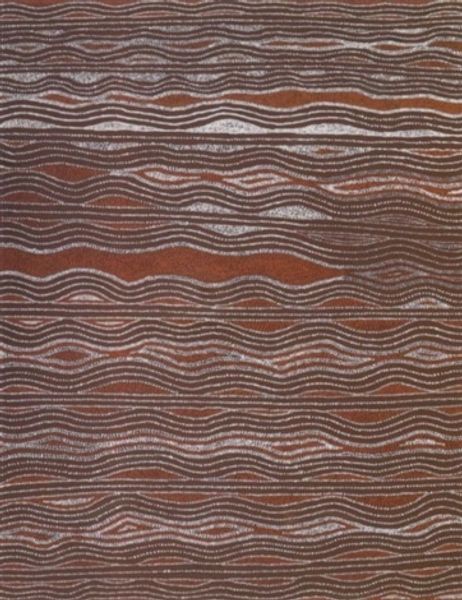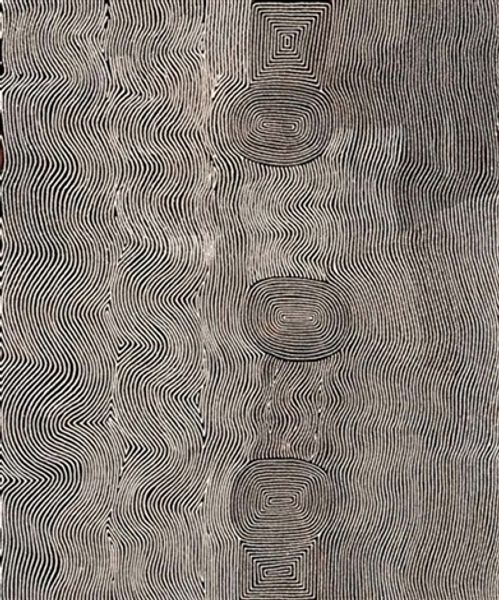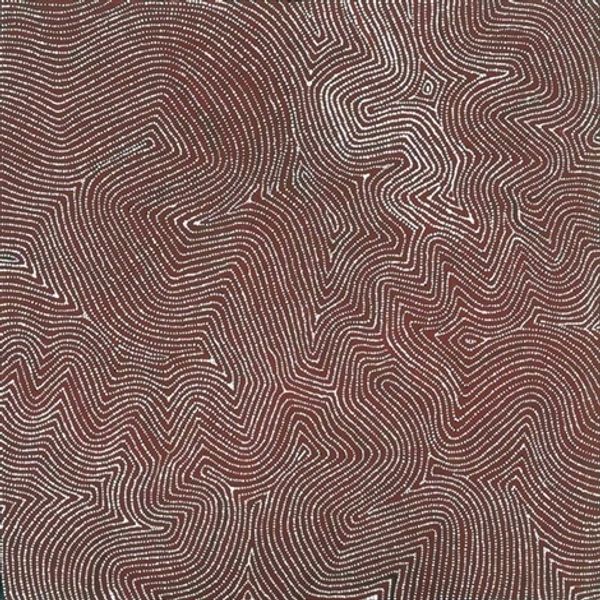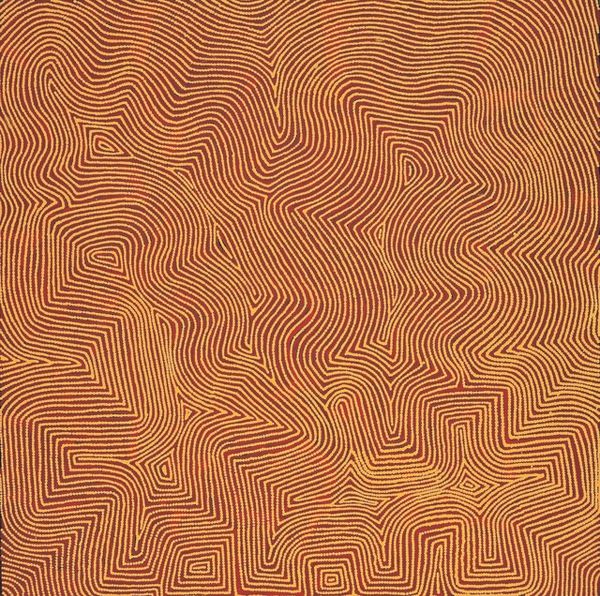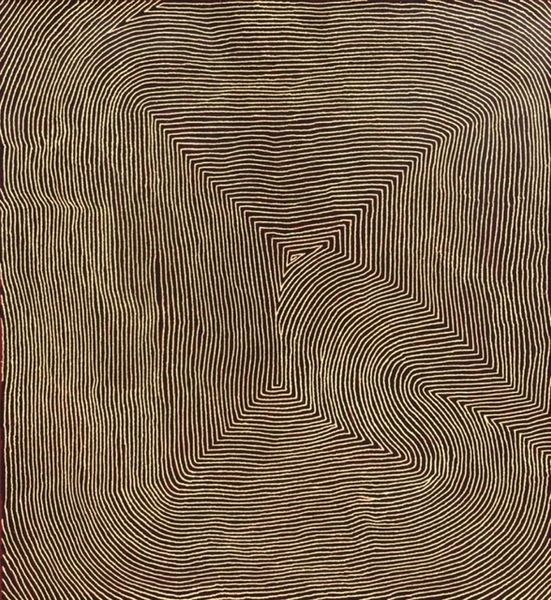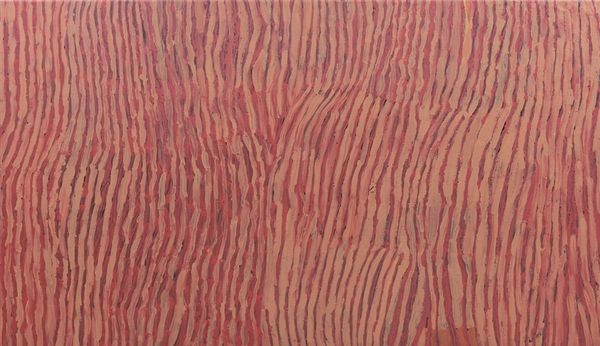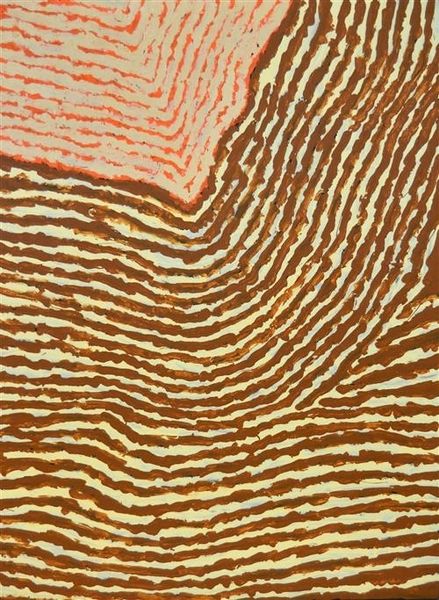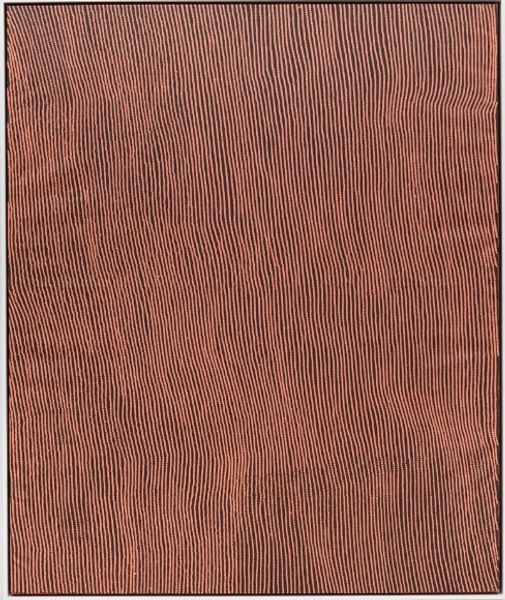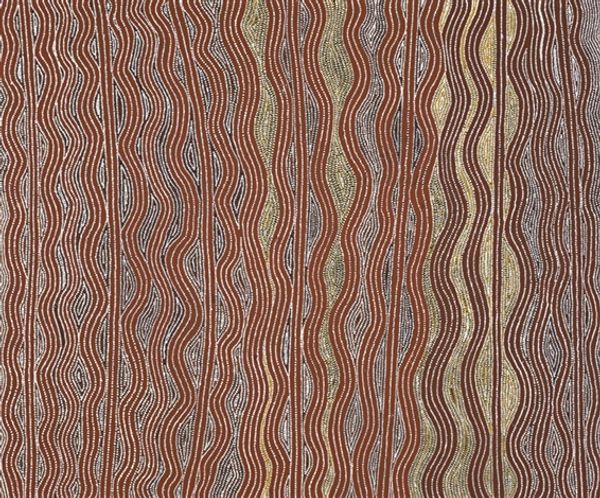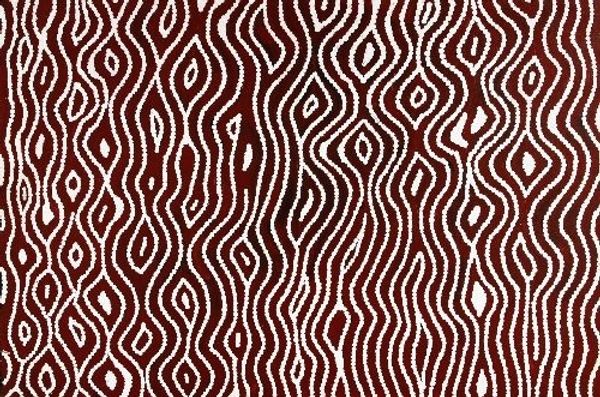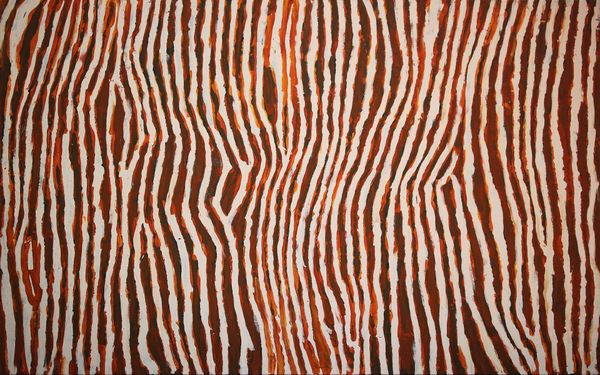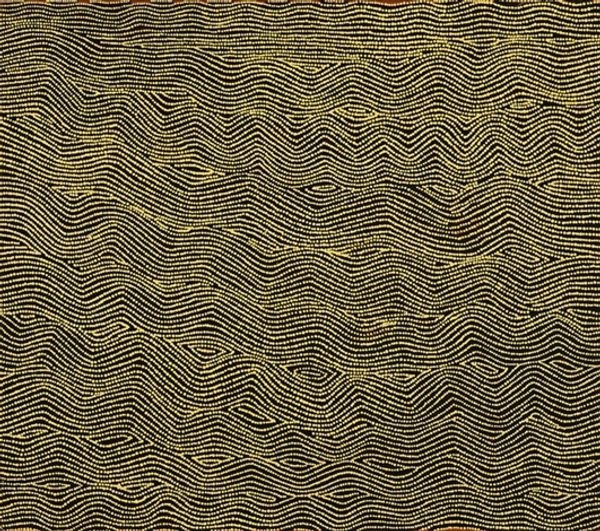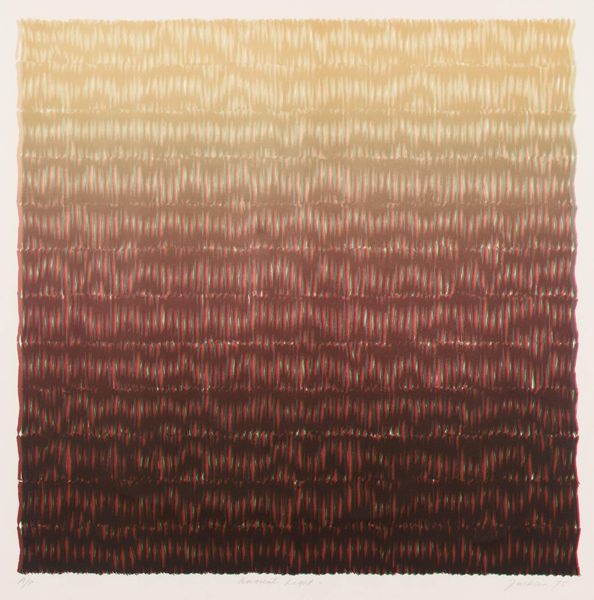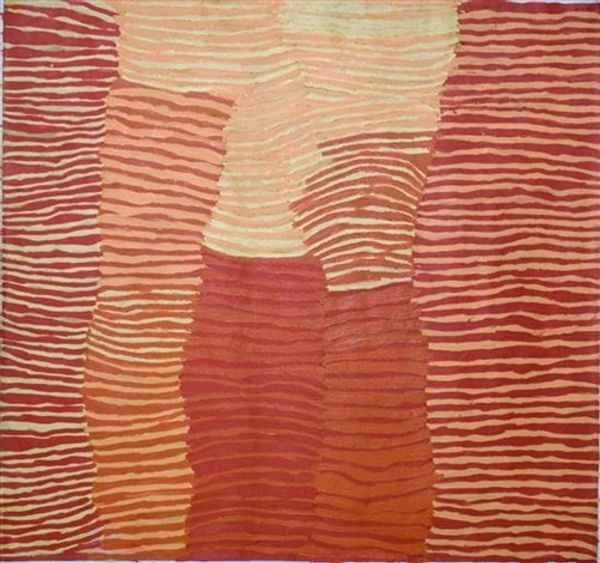
painting, acrylic-paint
#
painting
#
acrylic-paint
#
geometric pattern
#
geometric
#
abstraction
#
line
Copyright: Warlimpirrnga Tjapaltjarri,Fair Use
Curator: Warlimpirrnga Tjapaltjarri’s "Maw Maw Yntjipi," painted in 1999 using acrylic on canvas, offers a mesmerizing exploration of line and form. Editor: The first thing that strikes me is how relentlessly patterned it is. It's almost dizzying, but in a strangely calming way. There’s a rhythm established that pulls me in, even as I’m trying to decode the image itself. Curator: I see those layers, those variations in line and how the painting’s ground becomes part of the experience. Warlimpirrnga Tjapaltjarri, one of the last of the Pintupi people to come in from the desert, creates these works using simple materials but the impact feels immense. Look how the acrylic becomes an integral part of portraying knowledge about the land. Editor: Yes, but I also read this work as a powerful testament to the resilience and survival of Indigenous culture. Warlimpirrnga came in from the desert with his family as a young man, after they were located by Papunya settlement staff. Considering the cultural genocide attempted during colonization, art like this becomes crucial to protecting knowledge, identity and self-determination. The geometric patterns evoke a connection to ancestral stories and represent the artists’ role in protecting community history. Curator: Absolutely, that link to the desert and Indigenous connection is vital to its reception and context. Note how the artist’s hand and labor, through applying those lines, literally embody these ancestral mappings. The scale, and sheer repetition of lines become almost a performance of belonging. Editor: It does. It underscores the historical imperative to understand this as more than just pretty abstraction. It’s a powerful assertion of Indigenous presence and resilience in the face of ongoing challenges, a reminder that art can be a potent act of resistance and cultural preservation. Curator: So when we step back and see it hanging here in the gallery we're looking at acrylic and canvas used in a really revolutionary and profound manner, disrupting definitions of the traditional use of art materials. Editor: In this light, seeing the layers of geometric patterns not only for their aesthetic qualities but as coded declarations of community ensures the importance of Maw Maw Yntjipi's continued impact.
Comments
No comments
Be the first to comment and join the conversation on the ultimate creative platform.
